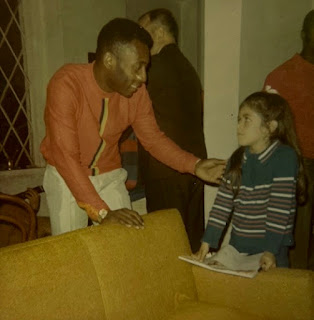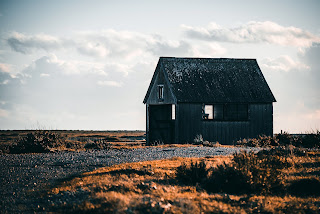(revised on Medium) On a geography lesson, determination, and a giant sycamore tree (series: notes to myself)
I must have been eight or nine years old, for I had just finished my third (or was it fourth?) grade (terza o quarta elementare). It was the usual, long summer in Guarcino, the small village between Rome and Naples, where I spent all my childhood holidays. Soon we would have returned to Rome, the school would have restarted, and I would have failed all the geography tests. Again.
I had no memory. Never did and never will. Yet the teacher kept quizzing me about the names of the regions of Italy, the names of the cities in the regions and of the main rivers, and their length, the names of the highest mountains in the Alps and the Apennine... There was no reasoning, no logical inference, nothing to understand, criticise, or debate. I remember her asking me about the “orography” of the Val d’Aosta region. The word in Italian is very similar: “orografia”. I had no recollection. So I started talking about the importance of “oro” in Val d’Aosta (“oro” means gold in Italian). She kindly and gently, but clearly and firmly, put me to shame. She was a great teacher. But I still remember where I was in the classroom as if it were now.
Piles of facts. And I could not care less. I saw no exit, no safe alternative, only a thrashing failure.
Time was running out. The summer would soon be over. I was terrified.
Then, one day, in a small restroom that no longer exists, I was reflecting on my fear while looking outside the window at the giant sycamore tree in the park in front of our house. It was so strong. It had no fear of any challenge or test. If only I could have been like that giant sycamore tree. I was trying to understand my predicament. Instead of being afraid, I asked myself why I was worried and how I could stop being worried. Could I be just like that giant sycamore tree, withstanding rain and winds, snow and heat? Looking for a way to remove or at least manage that dread of geography and the related anxiety, I realised that the only way to overcome it was to decide that I would memorise all the information the teacher needed from me. I was going to stand on my own feet. I had to be able to do it, and I discovered that I had the determination to do it. I was a child and did not know the phrase, but for the first time in my life, the implicit sense of “no matter what” – or perhaps “whatever it takes” – emboldened me in all its reassuring strength. That was it: my fear could be conquered because I was determined to pay whatever price it would take to do all that was needed. All I had to do was to rely on myself, trust my determination, never give up, and finally get all those stupid facts engraved in my brain, regurgitate them at the right time, and forget them afterwards. Surely I could do this much. It only took complete, utter, relentless determination for a kid with no memory. I looked at the giant sycamore tree and its long branches. Such a symbol of strength. I could breathe again. Sleep again. All I had to do was commit myself, rely on my goodwill, and get things done. The solution was entirely within my power. Goodbye fear and anxiety. I was free. I enjoyed the rest of the summer.
When school started, I was ready. There was a red carpet in my room. It was rectangular. We still have it somewhere in the attic of the old house in Guarcino. I walked across its perimeter, repeating aloud, endlessly, for hours, the list of names that I had to be able to memorise. Again. And again. And then again. … All I had to do was to persist until I could recite them without hesitation or mistake. I was writing on my skin, but I could take the pain. Indeed, I could take even more pain if I wanted. The scant memory I had must be exercised. It was like winning in the stupid game of holding one’s finger on the candle’s flame longer than any other child. I knew I could burn alive rather than lose. I always won. I could take more pain than the teacher could inflict.
And so, when the teacher interrogated me that year, she was astonished. I knew all the regions’ cities, in alphabetic order, starting from the “capoluogo di provincia” (provincial capital). That was how they were listed in the textbook. And to this day, I still have no idea where some cities are, but I can locate them by reciting that list, even if it is half a century old, and new cities were added later. Torino, Alessandria, Asti, Cuneo, Novara, Vercelli (no Biella and Verbano-Cusio-Ossola, they were not in my textbook). Milano, Bergamo, Brescia, Como, Cremona, Mantova, Pavia, Sondrio, Varese (Google says I am now missing Lecco, Lodi Monza-Brianza, added later). Bologna, Ferrara, Forlì, Modena, Parma, Piacenza Ravena, Reggio Emilia (no Rimini at that time). And so on.
Geographically, it was a pointless lesson to learn. And yet, existentially, it made me discover, at a very early age, what kind of person I was (determined is an understatement), the importance of willpower and self-reliance, the value of being able to summon, use, and direct such strength, the peace of mind that comes with it, and the ability of self-reflecting about all this. Get the problem clear, understand the solution, discover how to get from the problem to the solution, and then be ready to do whatever it takes to reach it. And if the journey requires much pain and effort, so be it. I can bear it.
Now, when I feel that I cannot take it anymore, that enough is enough, I search for that little kid in my mind, and the giant sycamore tree, and I know that if he could do it, so can I.
I often return to that moment, which I remember as if I were there right now, and that enlightening understanding, when something hard, seemingly insurmountable, too difficult, or too demanding, challenged me to the limit of my abilities. I have spent decades honing that inner self-reliance, the certainty that, with patience, determination, goodwill and willpower, tenacity, and perseverance, you can deal with almost any problem that has a solution within human reach, even problems that seem much bigger than your ability to cope with them. It’s like walking, one step at a time, pacing yourself. You can get anywhere with enough time.
I learned the lesson of commitment. Then, much later, I had to learn the lesson of not committing myself. Because if you are so determined, the risk is the inability to understand when it is time to stop, to give up, to let things go, to change your mind, to modify your course of action, to cut your losses and realise that something or someone is not worth the pain or the determination, after all. Perseverance may quickly become pig-headedness. This is why I never run a marathon. I know I would spend way too much time preparing for it, but above all, I would be unable to stop before finishing it, even if it may cost me a heart attack. Some challenges are better left alone if you know that you are too strong-willed to handle them wisely. I am still learning to commit myself more measuredly.
As life shortens, I’m trying to become more judicious in choosing the challenges worth tackling. It’s not tolerance, patience, flexibility, or even intelligence. It’s just the sense that, yes, a step at a time and I will get there, but there are many “there” that are not worth the effort, and time is running out to get where I really want.
One meets many people through time. Some are friendly, and some are not. To those enemies (not many, yet more numerous than I wish), who have enjoyed making my life more difficult, or exercised their power to sprinkle my work with gratuitous challenges, to the arrogant, the envious, the mean, the obtuse, and to all those who have sought to give me some hard time, I have learnt to reply in my mind that they have no idea how much more determined I can be to make things work. Every “dare” fuels more energy to accomplish what I’ve been told I cannot, may not, or shall not. Every obstacle becomes a stepping stone for that kid who still remembers all those cities. To all the little Napoleons I have met in my life, I wish I could remind them never to challenge someone who can take so much more pain than they can endure.
The giant sycamore tree is still there. I see it less often now, but it still reminds me of that geography lesson. Many years later, as a teenager, I learnt about the first of the Delphic maxims, γνῶθι σεαυτόν, “know thyself”. The Greeks distinguished between “episteme” as scientific or systematic knowledge, the sort of knowledge which the teacher was trying to convey through the geography lectures. And “gnosis”, understood as knowledge by experience, perception, or intimate relationship. This is the “gnōthi” in the Delphic maxim. And that was the lesson of the giant sycamore tree, which a long time ago helped a little kid to discover a bit of himself.
Foto: Guarcino, Window of Floridi House, and the "Parco della Rimembranza".







"Geographically, it was a pointless lesson to learn. And yet, existentially, it made me discover, at a very early age, what kind of person I was (determined is an understatement), the importance of willpower and self-reliance" really true;
ReplyDelete